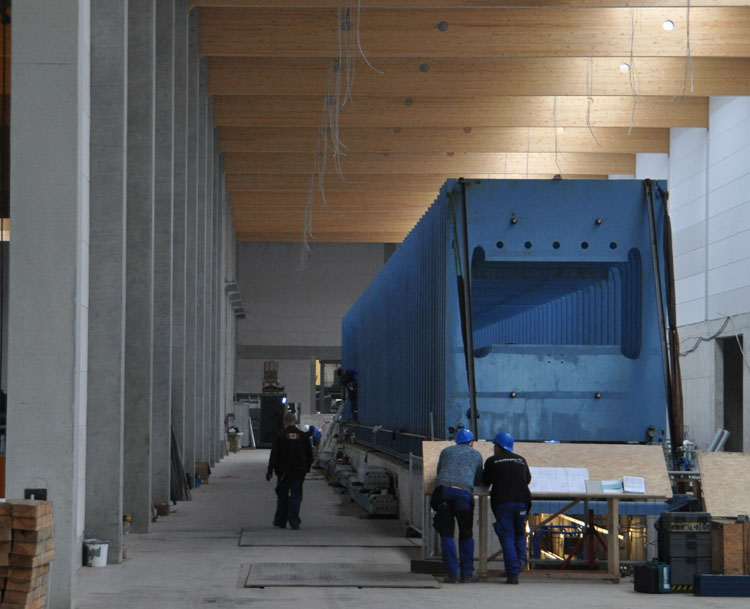 |
This is the machine that get's installed. This passage could be used for all the heavy parts, the wide side to the right has got a cellar underneath it and can't carry a load. The largest part of this machine was installed by Biedenbach, therefore he used on of it's WEMB108 cranes. That is an Effer 108N on a 2-axled MAFI platform that is build in a similar way as this crane, only with less lifting capacity. Biedenbach owns 2 of these WEMB cranes. |
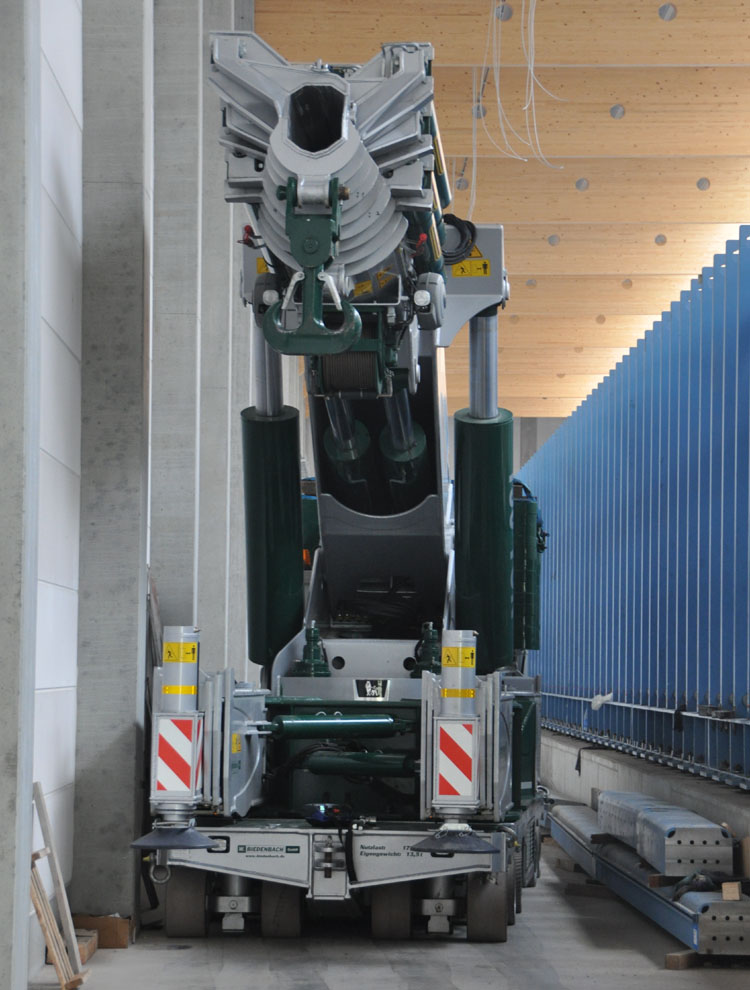 |
Now the crane is driven to the lifting location via this path. The parts that lie here are heavy and couldn't be moved so easily. |
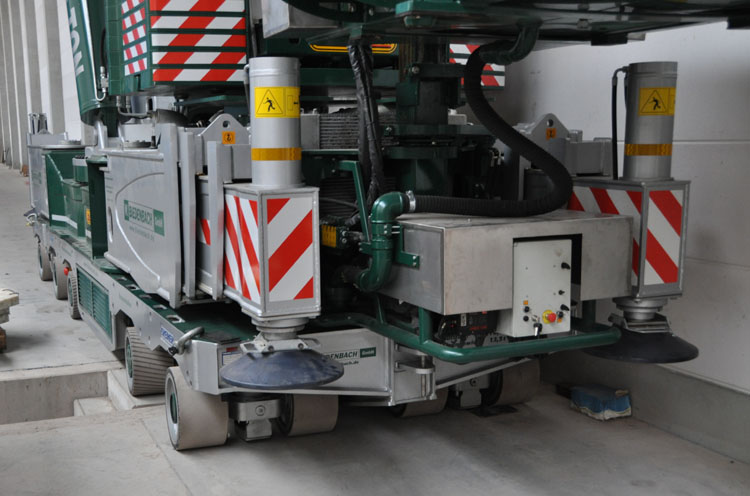 |
But the crane is compact, so this trip didn't cause any problems. Only at the end there was a stairway going down into the pit, that made the passage a bit tricky. |
 |
Now it is time for some planning and manoeuvring. The most important outrigger is being extended and positioned, the Greiner is also moved to get the crane at a good and stable spot, using the available space as good as possible. |
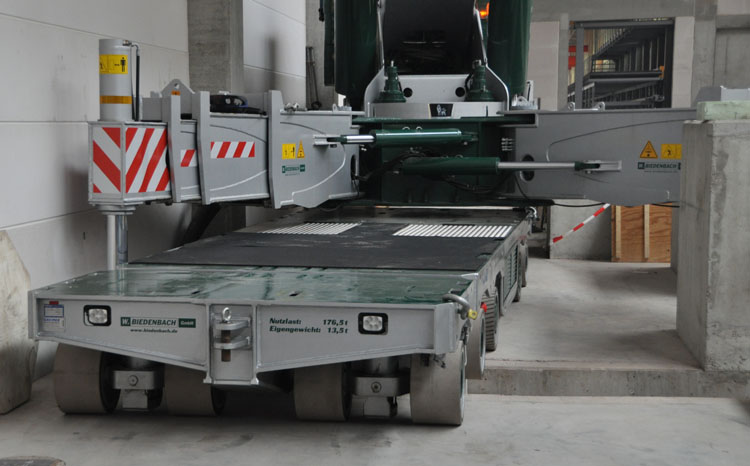 |
The other outriggers are also on the floor, the Greiner is now driving away and is going to get the load. |
 |
The crane without it's platform, a stange sight at first. In this setup it weighs about 70 tonnes and is heavy enough to do the lift. This also explains why the platform and the crane each have their own powerpack. |
 |
The bottom of the crane, for those that are interested or for model builders. |
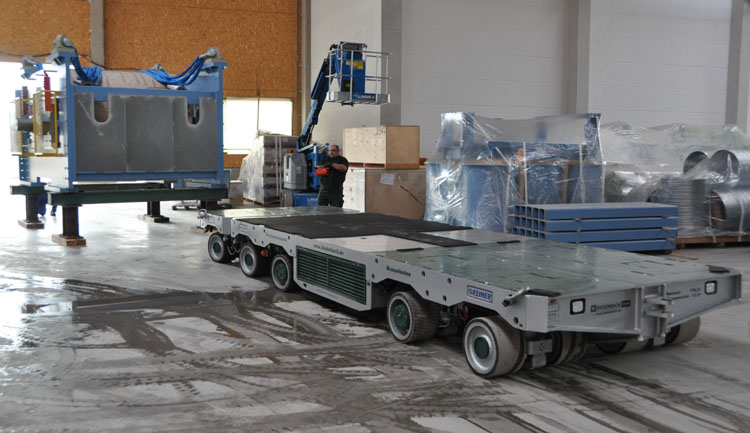 |
| The platform has reached the machine... |
 |
| ...and now is driven underneath it. |
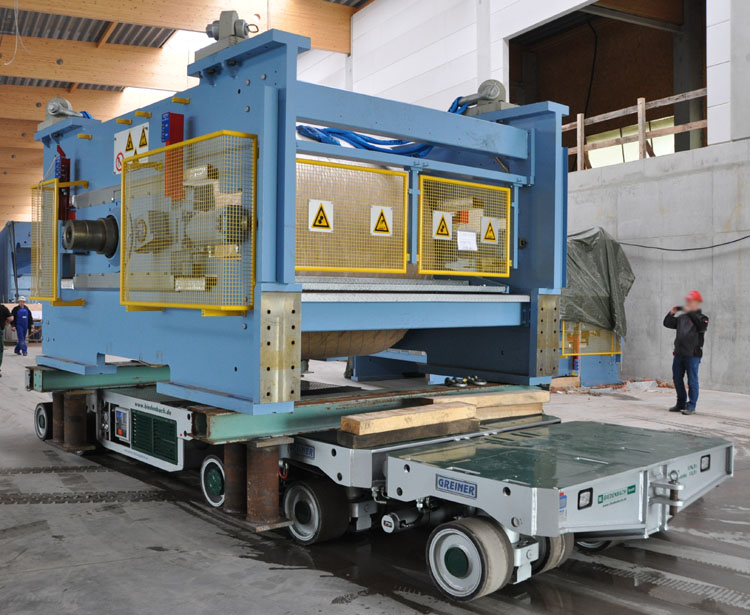 |
| The hydraulic suspension takes the load of the ground, now it drives back to the crane. |
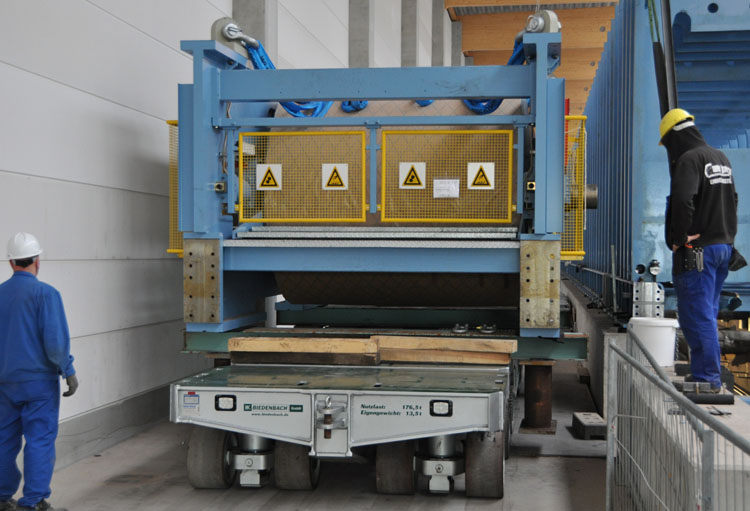 |
| This part is much wider... |
 |
| ...so it became tight at each concrete pole that was at the wall. After about half an hour the destination was reached without any damage to the machine. |
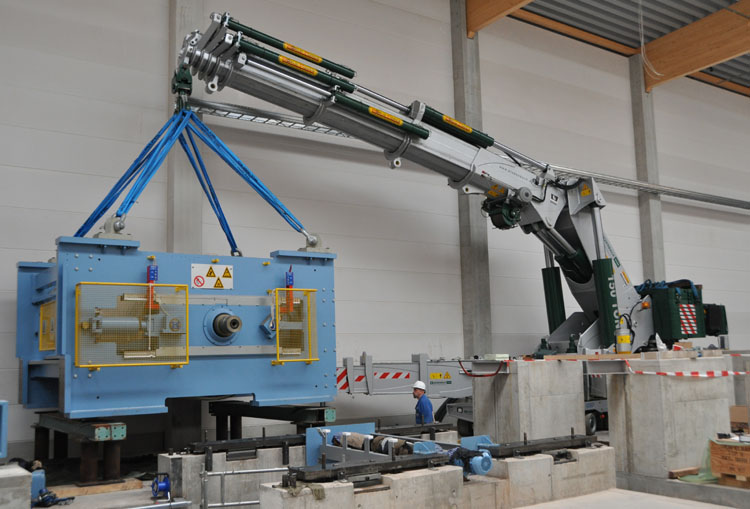 |
The supports that hold the machine are now put back on the ground. The Sefiro is parked under the crane again, but isn't connected to it. Here the load is already hanging freely. It is remarkable how easy this crane lifts a load like that. After all it is hanging at 9,5 meters distance here, meaning the crane is at about 85% of it's capacity. |
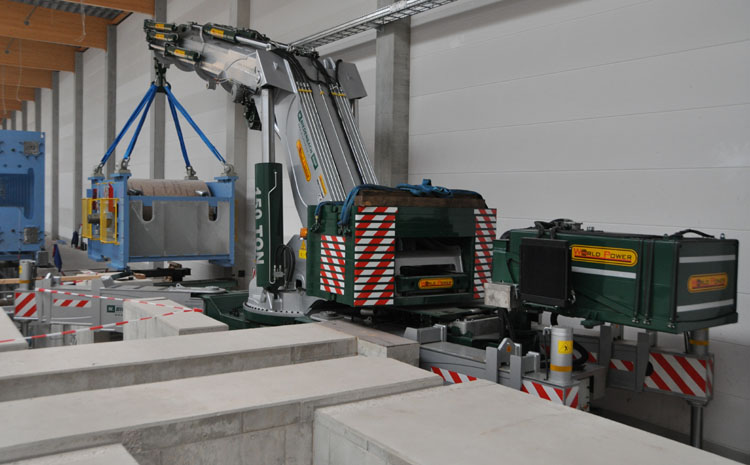 |
| Here some pictures of the tight situation the crane was in. |
 |
Beside the crane was a large concrete part, the rear outrigger couldn't swivvel because of it. The crane was parked as close as possible to this part in order to get enough room for the ballast. |
 |
The open space between the concrete parts made it possible to position this outrigger. These 2 outriggers are the load baring ones during this lift. They could not be extended completely, but nevertheless the full capacity is available, the ballast helps a lot. The swivveling outriggers extend 3x, this makes them short when not extended, this is easier on thight spots. |
 |
Also impressive is the boom of the crane, it barely bends under this heavy load! The crane is now rotated to the left. |
 |
This view from the rear shows that there is still some room left between the wall and the ballast, but not much. The rear outriggers have to be put down, but beside acting as ballast they don't add much to this lift. |
 |
The machine was now lowered slowly. The installation crew monitored this closely. |
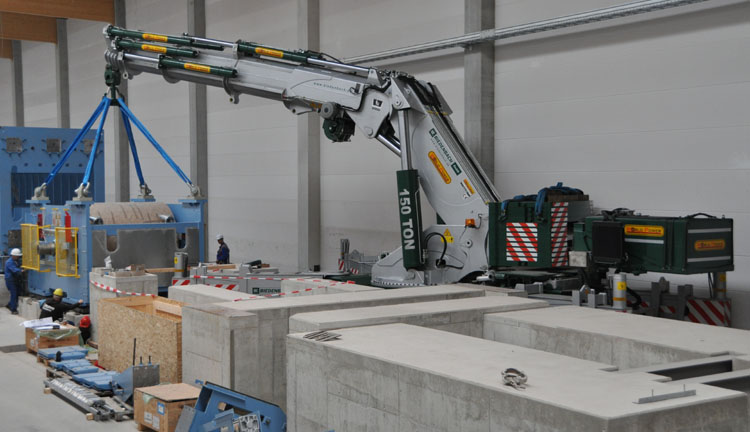 |
Here another view of this cool job! It is really amazing what this indoor crane can do with so little space to work on. |
| |
| During the job I could make some film fragments, they are put together to one movie that you can see here. |
|
| |
Later they also installed the 2nd part, unfortunately I couldn't photograph that anymore. This part was heavier, 37 tonnes, and had to be positioned on top of the first part. This made them choose a different lifting strategy. First of all the machine was loaded onto the supports like the first one. Then the crane was positioned directly beside the first part, so between the machine and the wall. Before the crane started it's lift, it was connected to the Greiner Sefiro again to get the highest possible weight.
Now the machine was, just like before, lifted of the supports at a distance of 9,5 meters. The machine then was lifted close to the crane, at about 4 meters distance. Now the ballast could be taken off, it was put on the table on the undercarriage. Now the crane was short enough at the rear to rotate. This is a impressive archievement, as the outrigger base was very small. The distance from the wall to the front outriggers was only 4,57 meters. From the wall to the middle of the crane there had to be a clearance of 1,10 meter, as the boom stands out a little bit when set up to a 87° angle. The heigh weight is what brought enough stability to it, therefore being able to install this part at a lifting distance of about 5,6 meters. |
| |
| Back to the index of other Knuckleboom cranes |